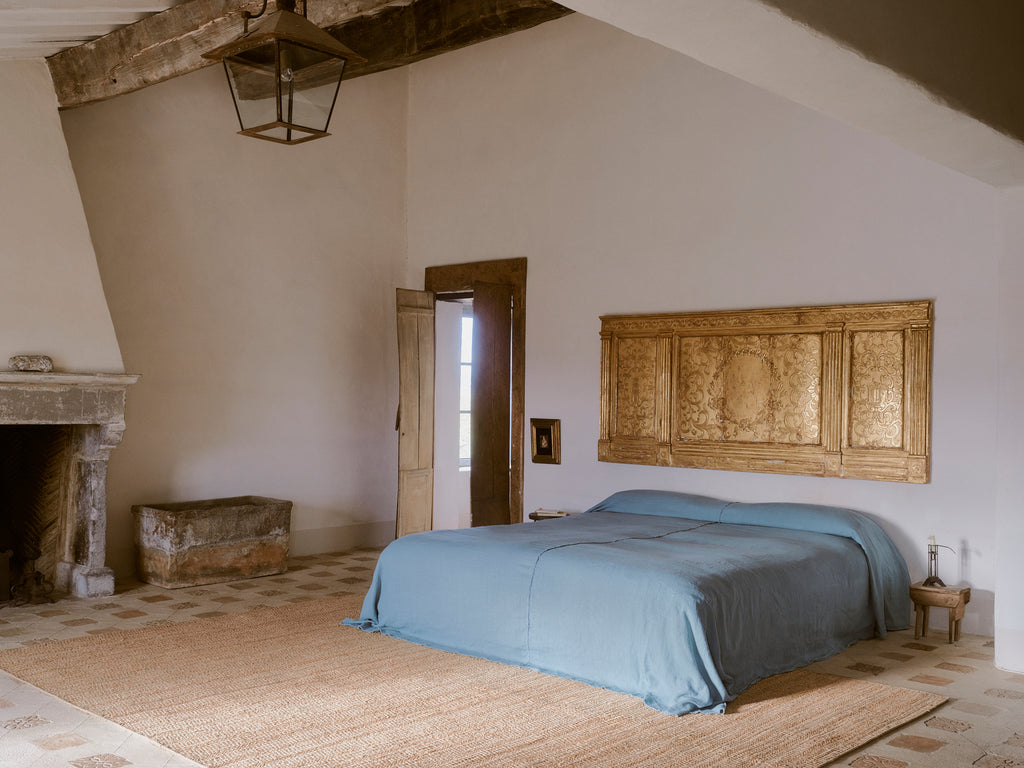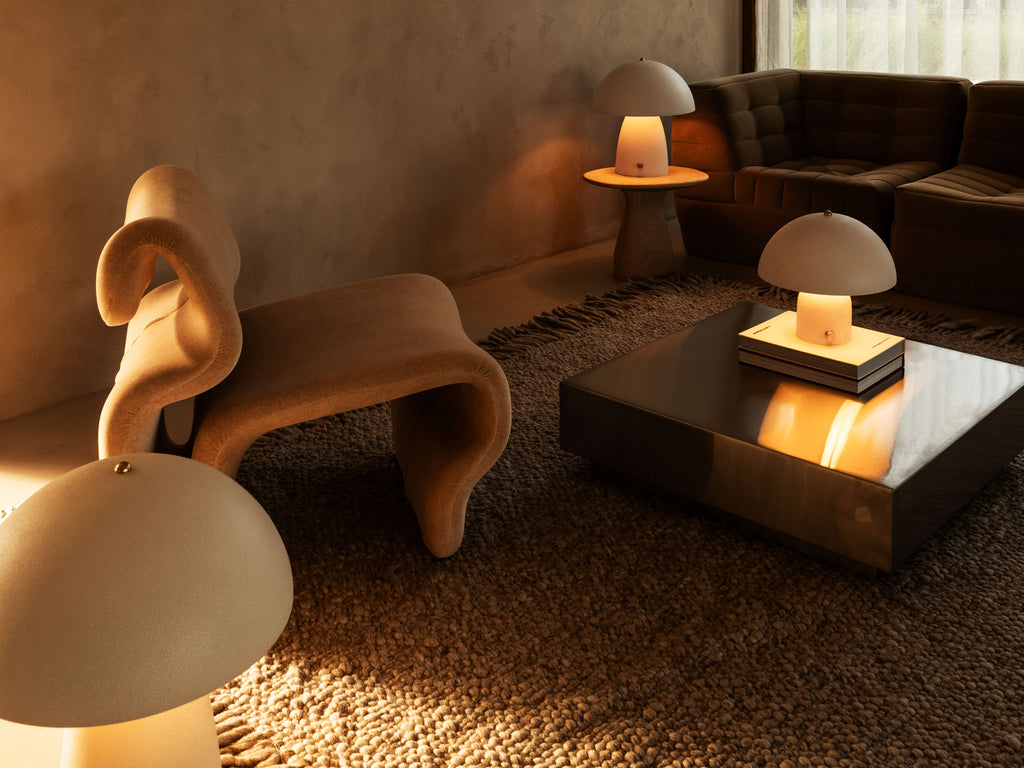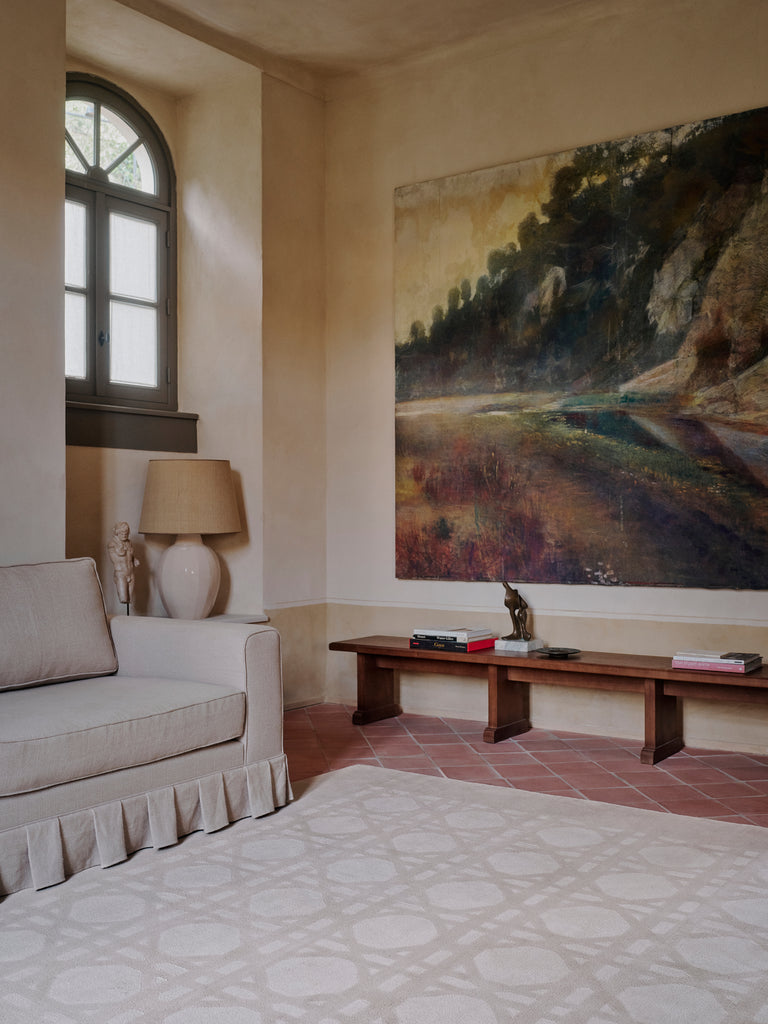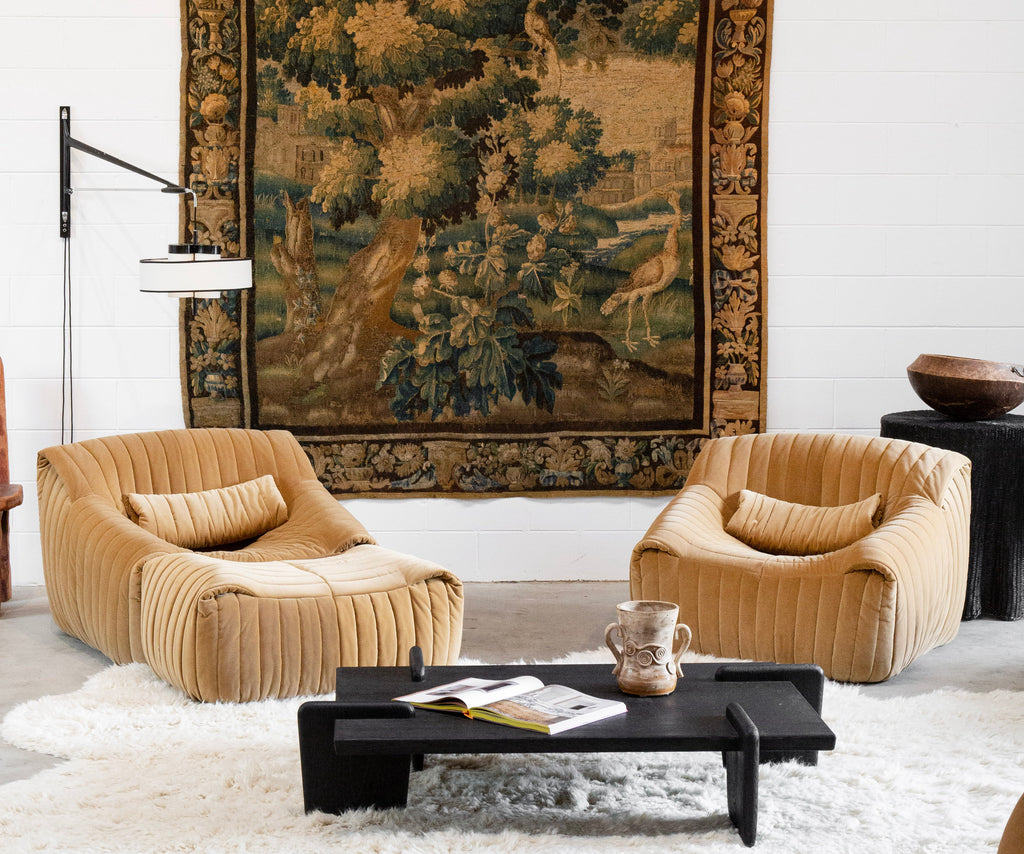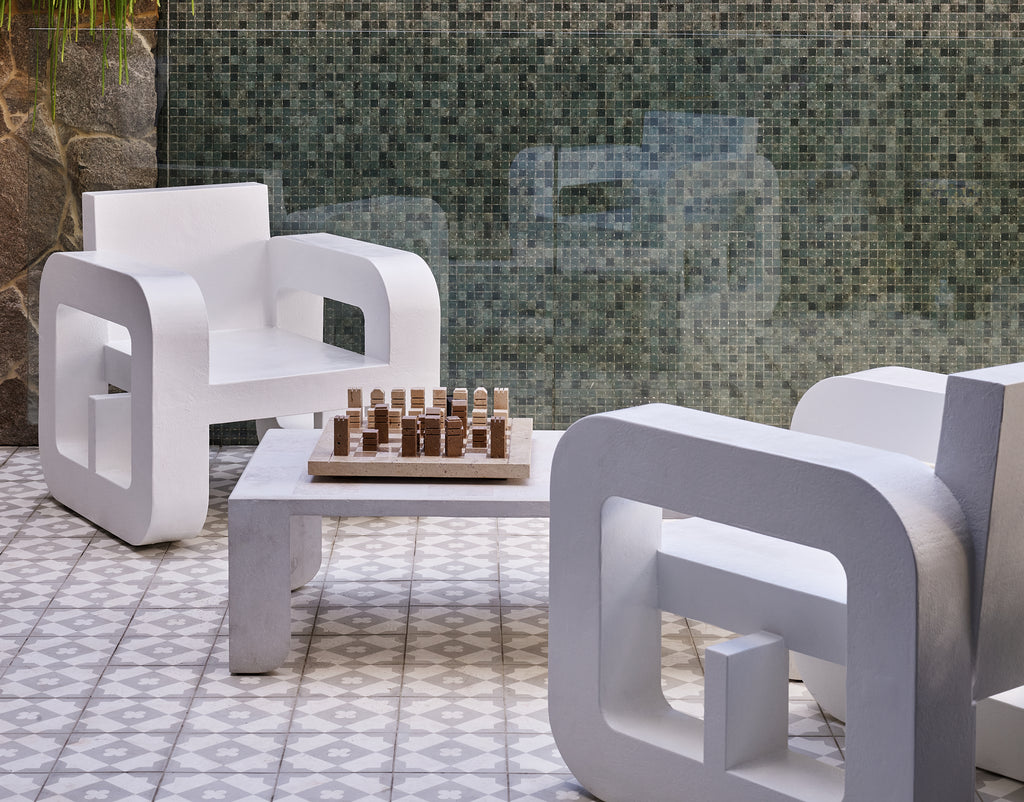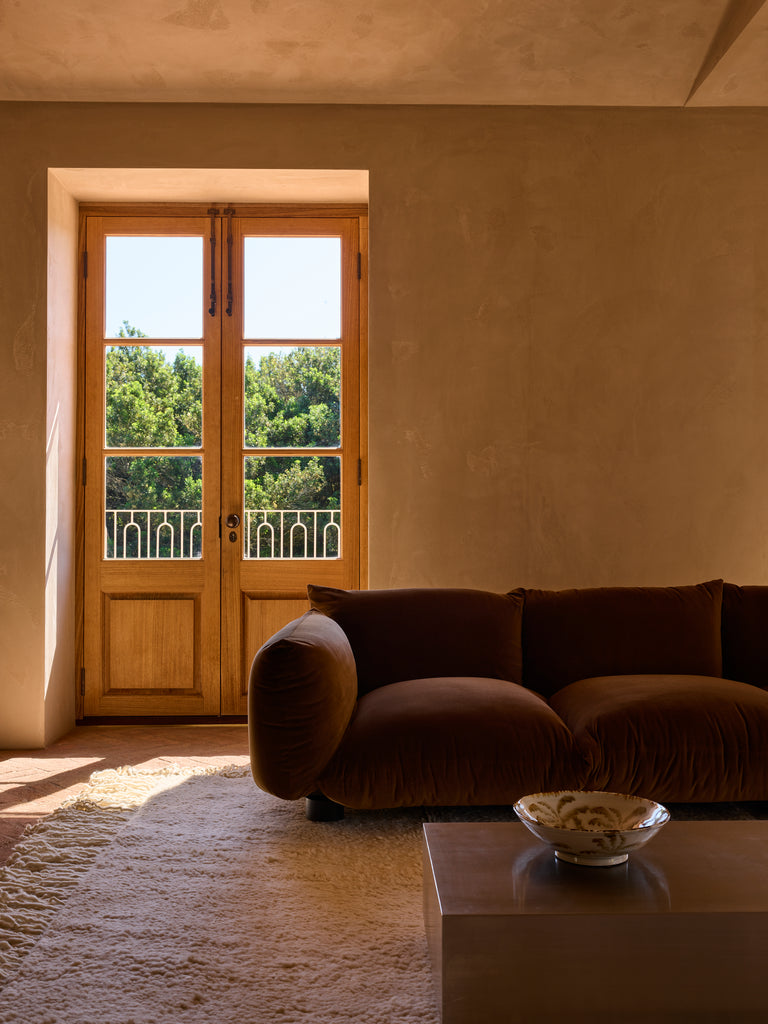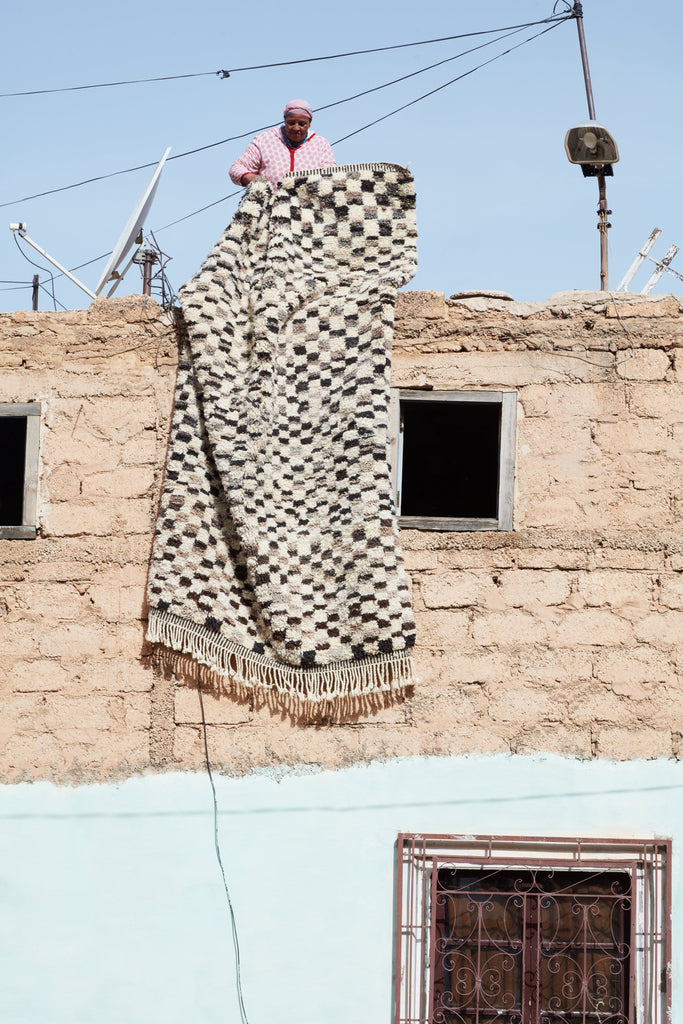
DESIGN FOCUS
Rug Story | Rhodes Talsint
Meet 'Rhodes', a 40 year old Talsint rug that we discovered in one of the most remote regions of Morocco. As Talsint rugs are no longer being produced there are a limited number of vintage pieces left in the world today. They’ve become a living artefact and an example of the ancient techniques passed down through generations of the Berber people in North Africa. Typically woven with bold colours like red, purple, and orange, this rug story is about the Rhodes Talsint — which has the faded patina of those vivid colours only achieved by age. Handwoven in the Figuig province of northern Morocco and is filled, like all Berber rugs, with ancient symbology.


We discovered the 40 year old Rhodes Talsint on our recent journey to far north Morocco, from the most remote of all the Berber Tribes, between the High Atlas Mountains and the Edge of the Sahara. It depicts both both male and female symbols, including the symbol for birth and the fish-bone male symbols through alluring shades of muted coral, peach, red, taupe, caramels and ivory, with a random, endearing pop of green.

In a recent work Aux Origines De L’art (2003), Italian palaeontologist Professor Emmanuel Anati emphasizes that symbols were a visual languageused in primitive times before writing systems were invented. Since survival and the protection of our species was crucial for early mankind, almost all symbols in Berber carpets are sexual symbols; denoting the cycle of life, from fertility, their preoccupation to preserve and re-create life (birth), and death.


Symbols were not merely for decorating, they served a magical-religious purpose. In preserving life, another meaning depicted by the symbols is this concept of the sanctuary, which again, ties into the preoccupation with safety and preserving life. Feminine symbols often depicted in Berber rugs include the lozenge, the chevron and the X-shape, while male symbols are depicted as long and thin, basic forms always being straight lines, sticks, ribbons, or beams. Often, male and female sexual symbols are depicted side-by-side, or linked with each other, or inside the other to denote sexual union.


Perhaps we can imagine that Rhodes is the story of a tribe and their journey across the deserts of Morocco; that the woman who weaved it was graced with the birth of a child represented in the green lozenge. Or maybe it symbolises a celebration; a community; a love triangle?
The story you take away from the symbols in Rhodes Talsint is really up to you - but there is an undeniable feeling of history and magic that it possesses; of wonder in seeing something different each time you view it.
YOU MIGHT LIKE THESE


